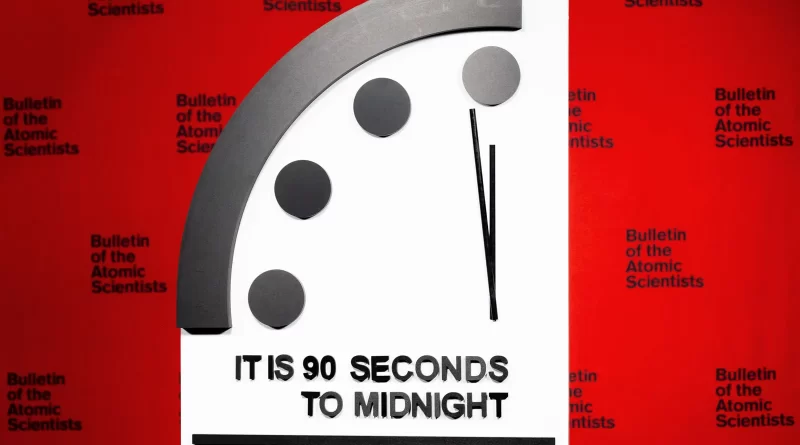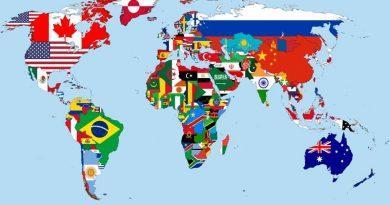We are all going to die? Doomsday Clock is at 90 seconds to human extinction on earth
The Doomsday Clock, a symbolic countdown to human extinction, remains at 90 seconds to midnight, the closest it has been since its establishment in 1947, according to a group of international scientists. The Bulletin of the Atomic Scientists highlighted several ongoing threats that influenced their decision, including the potential for nuclear escalation in Ukraine, the devastating impact of modern warfare in Israel and Gaza, and the lack of action taken to address the climate crisis, which poses a significant risk to billions of lives.
Rachel Bronson, the president and chief executive of the organization, emphasized the unsustainability of the current situation, stating that “ninety seconds to midnight” is a deeply concerning position. Last year, the Bulletin set the metaphorical Doomsday Clock at 90 seconds to midnight, the closest it had been since its establishment after World War II. In 2023, the panel of international scientists expressed that humanity’s existence is at a greater risk than ever before, largely due to the invasion of Ukraine and Russia’s thinly veiled threats to use nuclear weapons.
Founded in 1945 by Albert Einstein and other scientists involved in the development of atomic weapons, the Bulletin aims to educate the public about potential global threats that could lead to the end of the world. Annually, the Bulletin updates the time on its symbolic Doomsday Clock to reflect the existential risks posed by human activities, including nuclear war, biothreats like Covid-19, artificial intelligence, and the climate crisis. The striking of midnight symbolizes the ultimate catastrophe. The setting of the clock’s hands is determined each year by the Bulletin’s science and security board, with the support of its board of sponsors, which includes 10 Nobel laureates.

The Bulletin’s 2024 announcement highlighted several global threats that influenced their decision. These threats include the Russia-Ukraine war and the deterioration of nuclear arms reduction agreements, the climate crisis with 2023 being the hottest year on record, the increasing sophistication of genetic engineering technologies, and the significant advancement of generative AI. The Bulletin’s use of the Doomsday Clock has faced criticism for its perceived “scare tactics” over the years, as the clock has gradually moved closer to midnight. Prior to 2017, the clock only used whole minutes, but since 2020, it has started to use seconds, currently set at 100 seconds to midnight.
In response to criticism, the Bulletin maintains that it has no political agenda and that the clock hand has been moved away from midnight almost as often as it has been moved towards it. Despite the clock’s current position at 90 seconds, the Bulletin emphasizes the importance of urgent action by governments and communities worldwide. They remain hopeful and inspired by the younger generations taking the lead in addressing these challenges. The closest the clock came to midnight was in 1953 during the height of the cold war, following the first detonation of a thermonuclear warhead. Conversely, in the early 1990s, after the optimism of the cold war’s end, the clock moved furthest away from danger, set at 17 minutes from midnight. It has been moving closer and closer towards human extinction ever since. SOURCE: TheGuardian.com. Article by Oliver Holmes




